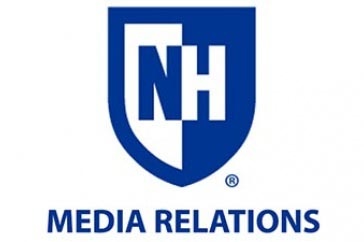UNH Researchers Discover New Pathways That Could Help Treat RNA Viruses

DURHAM, N.H.— Researchers at the University of New Hampshire have identified new pathways in an RNA-based virus where inhibitors, like medical treatments, unbind. The finding could be beneficial in understanding how these inhibitors react and potentially help develop a new generation of drugs to target viruses with high death rates, like HIV-1, Zika, Ebola and SARS-CoV2, the virus that causes COVID-19.
“When we first started this research, we never anticipated that we’d be in the midst of a pandemic caused by an RNA virus,” said Harish Vashisth, associate professor of chemical engineering. “But as these types of viruses emerge our findings will hopefully offer an enhanced understanding of how viral RNAs interact with inhibitors and be used to design better treatments.”
Similar to how humans are made up of a series of different chromosomes, known as DNA, many viruses have a genetic makeup of RNA molecules. These RNA-based genomes contain potential sites where inhibitors can attach and deactivate the virus. Part of the challenge in drug development can be fluctuations in the viral genome that may prevent the inhibitors from attaching.
In their paper, recently published in the Journal of Physical Chemistry Letters, the researchers looked specifically at an RNA fragment from the HIV-1 virus and its interaction with a ligand/inhibitor, a complex compound that is known to interfere with the virus replication process. Using computer modeling, the researchers discovered the pathways of the inhibitor unbinding from the viral RNA in several rare events that unexpectedly showed a coordinated movement in many parts of the binding pocket that are the building blocks of RNA. The scientists focused on the structural elements from the HIV-1 RNA genome because they are considered a good model for studying the same processes across a wide range of RNA viruses. The researchers conducted simulations at the molecular level of the rare structural and conformational actions of the binding/unbinding process which are often difficult to observe using experimental methods in the lab.
“We observed what are called rare base-flipping events involved in the inhibitor binding/unbinding process that provided the new details of the underlying mechanism of this process,” said Vashisth. “Our hope is that this adds new possibilities to a field traditionally focused on static biomolecular structures and lead to new medications.”
The University of New Hampshire inspires innovation and transforms lives in our state, nation, and world. More than 16,000 students from all 50 states and 71 countries engage with an award-winning faculty in top-ranked programs in business, engineering, law, health and human services, liberal arts and the sciences across more than 200 programs of study. As one of the nation’s highest-performing research universities, UNH partners with NASA, NOAA, NSF and NIH, and receives more than $110 million in competitive external funding every year to further explore and define the frontiers of land, sea and space.
Latest News
-
January 15, 2025
-
January 6, 2025
-
December 12, 2024
-
December 11, 2024
-
November 22, 2024
















































